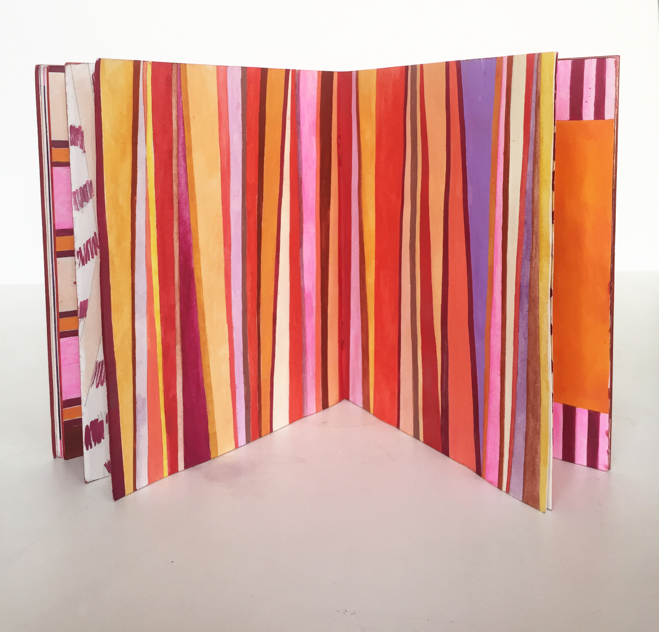Cynthia Carlson’s Grid Books – Unleashing Creativity with Shackles

One might make the mistake of thinking that the flames of creativity are fanned by open-endedness, ultimate freedom, no rules, starting from scratch, tossing out the baby with the bathwater, bulldozing the metropolis so as to construct another one in its place according to a subconscious dreamscape, embodying your inner child, dragging your knuckles and getting down with the primitive beast that lives within you. But then… there’s a blank canvas staring you in the face, taunting you: you can draw anything on its surface, anything.
One of the deepest held secrets about creativity is how to leverage limitation. Setting up rules, constraints, systems in fact propels creativity. Over the course of her career, Cynthia Carlson has made 58 Grid Books to date. Her on-going series of 6 in. x 6 in. books are further meditations on the grid as a perimeter, as a parameter. The books are, in her words, “what I do when I have writer’s block in my studio.”

Cynthia Carlson, Post LBJ, Book #41, Pen and Wash, 201
Each book contains 38 pages, which tallies to a grand total of 2,204 unique drawings at the same size using the same materials.
The trick to making so many different drawings is to set up a nested set of rules, within rules. Many artists have self-imposed rules for the studio. John Cage, from 10 rules for Students and Teachers, Rule #1 – Find a place you trust and try trusting it for a while. In Carlson’s case, this trusted place is a 6 in. x 6 in. book, using a grid as a compositional structure, drawing with pen and ink wash. Cage Rule #4 – Consider everything an experiment. For each individual book, Carlson determines an additional, unique instruction. The Red Paint Book only uses red paint. The pages of On Edge contain drawings only on the perimeter of each page, and so on.

Cynthia Carlson, Red Paint, Book #45, Pen and Wash, 2015
Finally, both Cage and Diebenkorn, in his 10 Rules for Painting, agree that mistakes are a vital component. An argument can be made that within a set of rules, mistakes are the only genuine moments of creativity. Cage Rule #6 – Nothing is a mistake, there’s no win and no fail. There’s only make. Diebenkorn Rule #7 – Mistakes can’t be erased but they move you from your present position.

Cynthia Carlson, My Newest Pen, Book #15, Pen and Wash, 2011
And so, that leaves us with one of the best-known adages of all time: rules were made to be broken.




